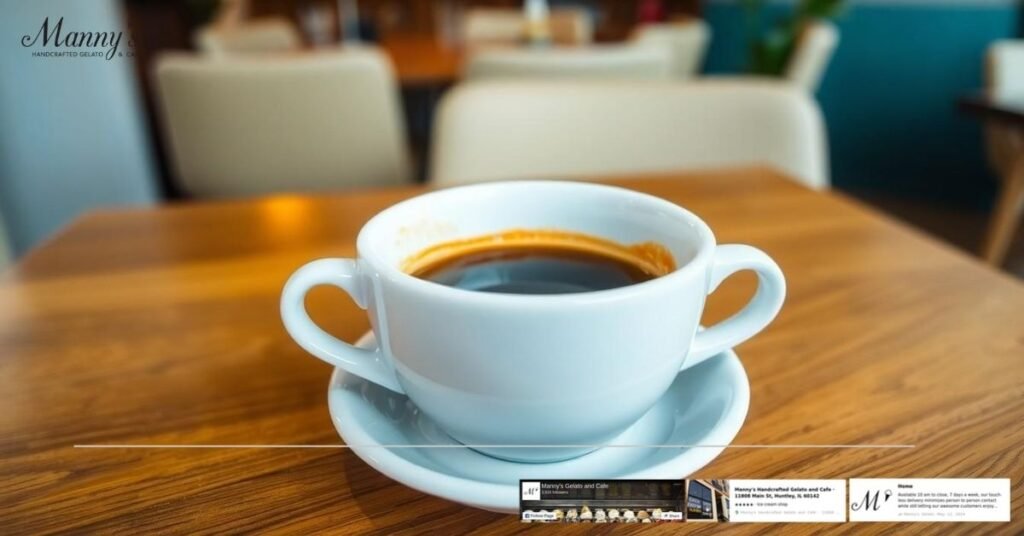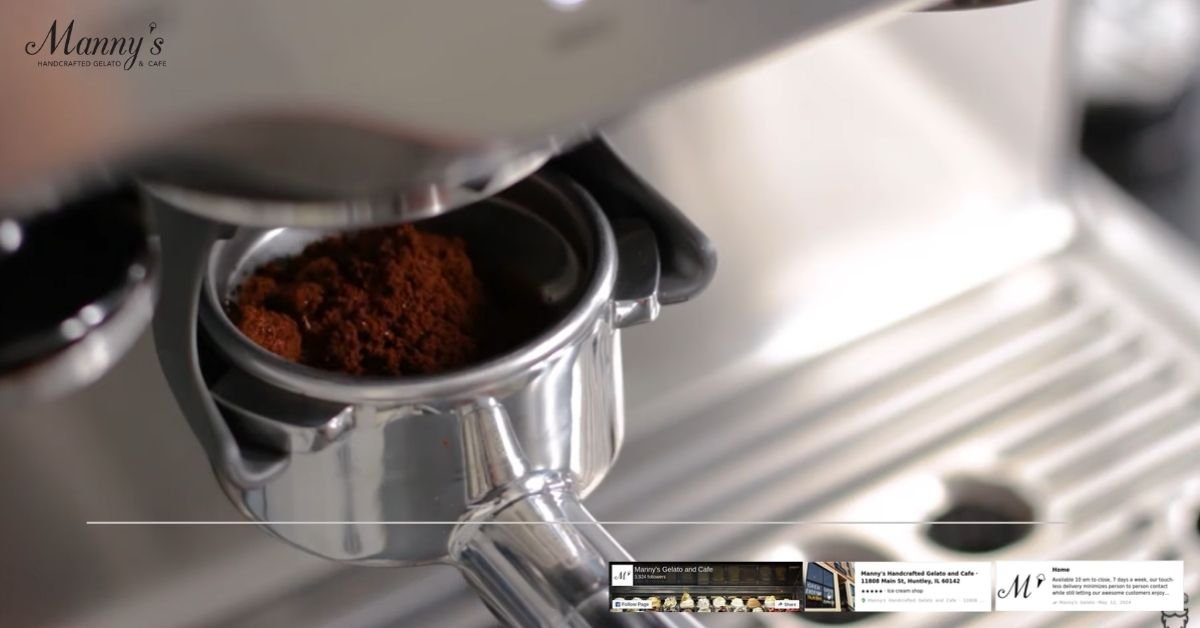- Single shot espresso uses 7-9 grams of coffee, yielding about 1 ounce (30 ml) of concentrated coffee with balanced sweetness, acidity, and bitterness. It’s ideal for standalone sipping or lighter espresso-based drinks like macchiatos.
- Double shot espresso, or “doppio,” doubles the coffee grounds (14-16 grams) to produce 2 ounces (60 ml) of espresso, offering bolder flavors and higher caffeine content. Perfect for milk-heavy drinks like lattes or as a robust standalone beverage.
- Caffeine content differs significantly, with single shots providing 30-63 mg and double shots offering 60-126 mg, catering to varying energy needs.
- Brewing differences are minimal, with both requiring 25-30 seconds, but double shots use twice the coffee grounds for a more intense extraction.
- Flavor intensity varies: single shots are milder and balanced, while double shots boast stronger, richer flavors, better suited for milk-based drinks or bold coffee lovers.
- Personal preferences play a key role—choose single shots for a nuanced taste or moderate caffeine and double shots for strength, richness, or an extra energy boost.
When it comes to espresso, we all have our preferences. Some of us savor the bold punch of a single shot, while others can’t start the day without the robust kick of a double. But have we ever stopped to think about what truly sets these two apart? Beyond the size of the cup, there’s a world of flavor, caffeine, and brewing differences to explore.
What Is A Single Shot Espresso?
A single shot espresso is a standard serving size made by forcing water through finely-ground coffee. It represents the foundation of many espresso-based drinks.
Definition And Characteristics
A single shot espresso consists of approximately 1 ounce (30 ml) of liquid. It’s prepared using 7-9 grams of coffee grounds and typically takes 25-30 seconds to extract. The result is a concentrated beverage with a layer of crema, a golden foam on top that enhances aroma and mouthfeel.
Flavor Profile And Strength
Single shot espresso offers a balanced flavor. It combines sweetness, acidity, and bitterness in harmony. The intensity is moderate, making it a suitable choice for those who prefer a less concentrated option compared to a double shot. Notes of chocolate, fruit, or nuts can emerge depending on the bean and roast used.
Recommended Uses
Single shot espresso works well in drinks with minimal milk, like macchiatos or cortados, to preserve the espresso’s flavor. It’s also ideal for those who enjoy sipping espresso on its own as a quick yet satisfying pick-me-up.
What Is A Double Shot Espresso?

A double shot espresso, or “doppio,” intensifies the essence of coffee by doubling the quantity used in a single shot. It’s a stronger and bolder option for those who enjoy a more robust espresso experience.
Definition And Characteristics
A double shot uses 14 grams of finely ground coffee, compared to the 7-9 grams in a single shot. This yields approximately 60 ml (2 liquid ounces) of espresso. To prepare it, we use a double basket or portafilter, ensuring a consistent extraction. The brewing process typically takes 23-35 seconds, depending on the grind size and machine calibration.
Flavor Profile And Strength
The flavor of a double shot is more intense but maintains the same taste profile as a single shot—balanced sweetness, acidity, and bitterness. The difference lies in its enhanced strength and higher caffeine content, providing twice the concentration with the same extraction quality, making it a favorite for those seeking a powerful cup.
Recommended Uses
Double shots are often preferred in milk-based drinks like lattes and cappuccinos, where the added intensity balances the richness of milk. For espresso enthusiasts, they’re ideal for savoring as a standalone beverage due to their bold character and satisfying crema.
Key Differences Between Single Shot And Double Shot Espresso

When choosing between a single shot and a double shot of espresso, understanding their unique characteristics can help refine our preferences. Let’s dive into their distinctions in volume, caffeine content, brewing, and flavor.
Volume And Caffeine Content
A single shot uses 7 grams of finely ground coffee to produce about 25-30 ml (1 liquid ounce) of espresso. It contains 30-63 milligrams of caffeine, making it a mild yet flavorful choice.
A double shot doubles the coffee grounds and volume, using 14-16 grams of coffee to deliver 60 ml (2 liquid ounces) of espresso. This results in 60-126 milligrams of caffeine, providing a significantly stronger boost.
Brewing Time And Process
Brewing a single shot takes approximately 25 seconds at 9 bars of pressure and a temperature of 88°C (190°F). These factors create a balanced and concentrated extraction.
Despite its larger size, a double shot follows the same brewing parameters—9 bars of pressure, 88°C, and 25-30 seconds. The key difference is the doubled quantity of coffee grounds, intensifying the end result.
Taste And Intensity
A single shot offers a balanced flavor, combining sweetness, acidity, and bitterness in harmony. Its moderate intensity makes it ideal for enjoying alone or in smaller milk-based drinks like macchiatos.
A double shot delivers a bolder experience, amplifying the coffee’s strength and richness. This makes it a popular choice for milk-heavy drinks, such as lattes or cappuccinos, or for those who appreciate a robust standalone espresso.
Choosing Between Single Shot And Double Shot Espresso

Selecting between a single shot and double shot of espresso depends on numerous factors that shape the taste, experience, and practical use of the beverage. Let’s dive into these considerations to determine the best choice for various situations.
Factors To Consider
Amount of coffee grounds, yield, and caffeine content all play roles in differentiating the two espresso options. A single shot uses 7-9 grams of finely ground coffee, yielding about 1 ounce (30 ml) of espresso, while a double shot requires 14-16 grams of coffee and produces 2 ounces (60 ml). Caffeine content is another primary factor: single shots contain 30-63 mg, whereas double shots provide 60-126 mg.
Flavor intensity is also worth examining. Single shots deliver a gentler, more balanced taste, while double shots are stronger and richer with bold notes. Additionally, consider how either option complements your favorite espresso-based drinks. Double shots suit milk-heavy beverages like lattes or cappuccinos, making them creamier without losing coffee flavor. Single shots, milder and less dominant, work well in macchiatos or as standalone espresso.
Personal Preferences And Scenarios
Personal habits and contexts often dictate which espresso shot fits best. For casual espresso drinkers or those who enjoy lighter, nuanced flavors, single shots work seamlessly. They also suit mornings where a moderate caffeine intake suffices.
For stronger coffee cravings or when crafting milk-heavy drinks, double shots excel. They provide a more robust flavor required to balance larger milk volumes. Double shots are an ideal choice during long days when an extra caffeine boost is necessary or for those who prefer a more intense espresso experience.
Conclusion
Whether we lean toward the balanced simplicity of a single shot or the bold intensity of a double shot, the choice ultimately comes down to our personal preferences and coffee habits. Both options offer unique experiences that can complement different moods, tastes, and occasions.
By understanding the nuances of each, we can better tailor our espresso to fit our needs, whether it’s a quick pick-me-up or the base for a creamy latte. Let’s savor the process and enjoy the journey of finding what suits us best. After all, coffee is all about what makes us happy.
Frequently Asked Questions
What is the main difference between a single and double shot of espresso?
A single shot of espresso uses 7-9 grams of coffee to produce about 1 ounce (30 ml) of liquid, while a double shot, or doppio, uses 14-16 grams of coffee to yield 2 ounces (60 ml). The double shot has a stronger flavor and higher caffeine content.
How much caffeine is in a single shot versus a double shot?
A single shot of espresso contains approximately 30-63 milligrams of caffeine, whereas a double shot has 60-126 milligrams. The caffeine content can vary slightly based on the type of coffee and brewing method.
Which espresso shot is better for milk-based drinks?
A double shot is better for milk-based drinks like lattes and cappuccinos due to its more intense flavor and higher liquid volume, which balances well with the milk.
Who should choose a single shot espresso?
A single shot is best for casual coffee drinkers or those who enjoy sipping a well-balanced espresso with minimal milk. It is also ideal for lighter drinks like macchiatos or cortados.
How does taste differ between single and double shots?
A single shot offers a balanced, nuanced flavor, while a double shot provides a bolder, more intense taste. The choice depends on personal preferences for coffee intensity.
Does a double shot take longer to brew than a single shot?
Yes, a double shot typically takes slightly longer to brew (23-35 seconds) compared to a single shot (25-30 seconds) due to the increased amount of coffee grounds and water volume.
Can I use a single shot for milk-based beverages?
Yes, but single shots are better for drinks with minimal milk, such as macchiatos or cortados, as the flavor may not hold up well against larger quantities of milk.
What affects my choice between single and double shots?
Your choice depends on preference for caffeine strength, flavor intensity, and the type of drink. Single shots suit casual drinkers, while double shots are better for stronger cravings or milk-heavy drinks.
Is the crema different in single and double shots?
The crema, a golden layer of foam on top of espresso, is present in both single and double shots. However, a double shot may have slightly more crema due to the larger coffee yield.
Are single or double shots more common in cafes?
Double shots are more common in cafes as they cater to a wider range of drinks, especially milk-based beverages. Single shots are less common but still requested by some espresso enthusiasts.




















